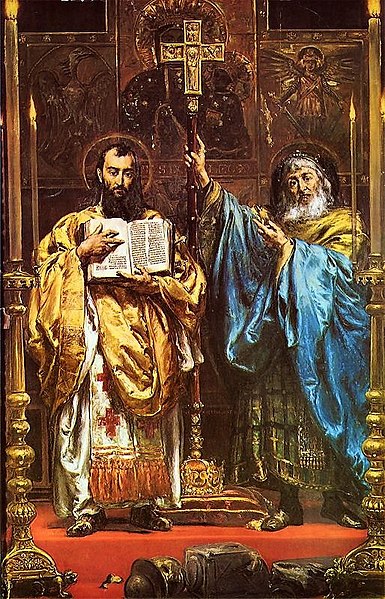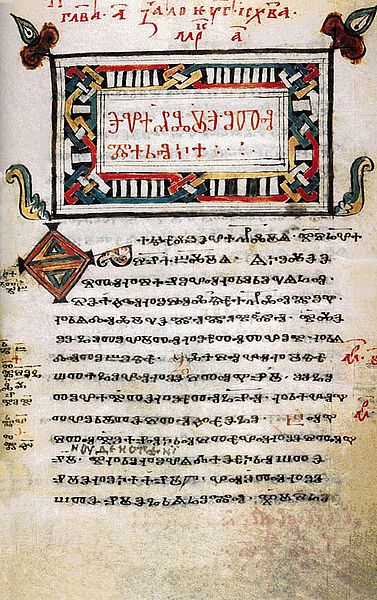Cyril and Methodius were brothers, Byzantine Christian theologians and missionaries. For their work evangelizing the Slavs, they are known as the "Apostles to the Slavs".
"Saints Cyril and Methodius holding the Cyrillic alphabet," a mural by Bulgarian iconographer Z. Zograf, 1848, Troyan Monastery
Cyril and Methodius, painting by Jan Matejko, 1885
Saints Cyril and Methodius in Rome. Fresco in San Clemente
The Baška tablet is an early example of the Glagolitic from Croatia
The Glagolitic script is the oldest known Slavic alphabet. It is generally agreed that it was created in the 9th century for the purpose of translating liturgical texts into Old Church Slavonic by Saint Cyril, a monk from Thessalonica. He and his brother Saint Methodius were sent by the Byzantine Emperor Michael III in 863 to Great Moravia to spread Christianity there. After the deaths of Cyril and Methodius, their disciples were expelled and they moved to the First Bulgarian Empire instead. The Cyrillic alphabet, which developed gradually in the Preslav Literary School by Greek alphabet scribes who incorporated some Glagolitic letters, gradually replaced Glagolitic in that region. Glagolitic remained in use alongside Latin in the Kingdom of Croatia and alongside Cyrillic until the 14th century in the Second Bulgarian Empire and the Serbian Empire, and later mainly for cryptographic purposes.
A page from the Zograf Codex with text of the Gospel of Luke
The Baška tablet, found in the 19th century on Krk, conventionally dated to about 1100
The first page of the Gospel of Mark from the 10th–11th century Codex Zographensis, found in the Zograf Monastery in 1843
In a book printed in 1591, Angelo Rocca attributed the Glagolitic script to Saint Jerome.







